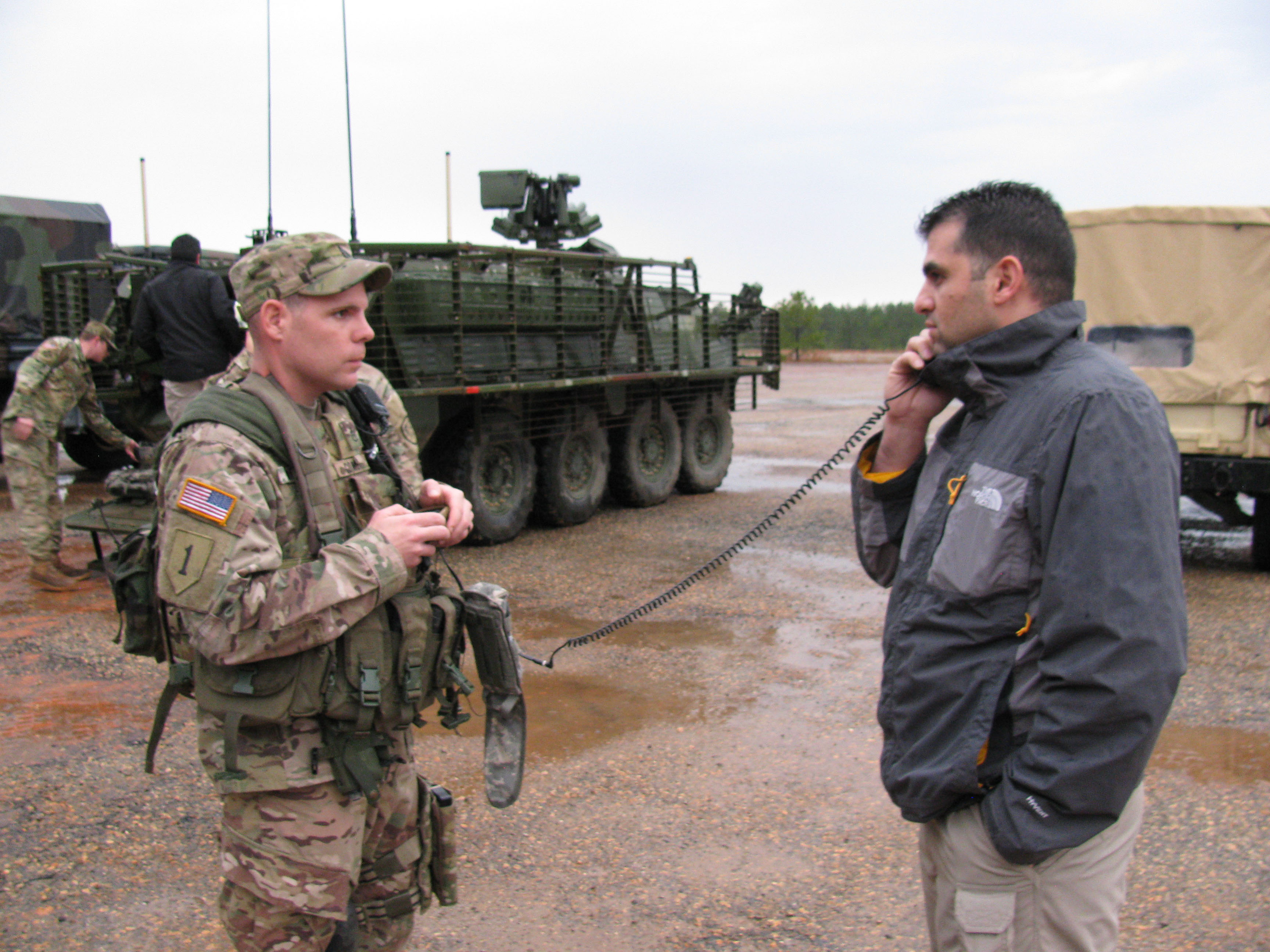
COMMAND/ORGANIZATION: Project Manager for Distributed Common Ground System – Army; Program Executive Office for Intelligence, Electronic Warfare and Sensors
TITLE: Product director, Machine Foreign Language Translation System
YEARS OF SERVICE IN WORKFORCE: 33
DAWIA CERTIFICATIONS: Level III in program management and engineering
EDUCATION: M.S. in engineering management, George Washington University; B.S. in civil engineering, Virginia Tech
AWARDS: Meritorious Civilian Service Award; Superior Civilian Service Award; Commander’s Award for Civilian Service (multiple); Achievement Medal for Civilian Service (multiple)
Product director puts translators in Soldiers’ pockets
by Mary Kate Aylward
“There will never be enough human linguists to meet the Army’s varied translation requirements.” That’s the problem Michael Doney’s team works to solve. The solution it’s building is the Machine Foreign Language Translation System (MFLTS), a family of software applications that will translate spoken and written material in any foreign language, anywhere in the world.
Commercial translation apps and services solve the general problems a Soldier trying to speak with a local vendor might encounter. But they stumble over DOD-isms, and they generally don’t work without internet access. “Moreover, the Army often requires translation of uncommon languages and specific dialects that are of little or no interest to commercial users and thus not typically available on commercial platforms,” Doney said. His team is integrating military-specific language into apps that will be hosted locally on a Soldier’s smartphone or similar device.
In effect, it’s a pocket translator that can go to the most remote corner of the world, a neat solution to the impossibility of having an Army linguist or local translator on hand at all times. “Developing innovative and creative solutions to complex problems is always professionally very satisfying,” said Doney. As product director of the MFLTS team, he leads a diverse group of acquisition professionals and is responsible for all aspects of the program, he said, “ranging from building the program team to the development of acquisition, contracting and sustainment strategies that result in the fielding of a required capability to Soldiers.”
MFLTS is a case in which an Army-built solution was appropriate and necessary, but Doney’s three decades in acquisition have given him an appreciation for the importance of “mutually beneficial and productive relationships with our industry partners.” During the run-up to the first Gulf War, “I saw how American industry could achieve previously unthinkable levels of production of complex high-tech equipment, and rapidly deliver capabilities to deployed Soldiers that were critical to mission success,” he said.
“Greening” has also been an important, and still continuing, part of his career. “I was fortunate to have an opportunity to work alongside NCOs early in my career,” he said. “Learning and understanding how the Army is organized provides the foundation for the development of POR [program of record] concepts, programmatic strategies, product requirements and testing methodologies, as well as development of fielding, training and sustaining approaches.”

The MFLTS undergoes testing during the Army Expeditionary Warrior Experiment 2016 at Fort Benning, Georgia. Soldiers used the MFLTS 2-Way translation app on the Nett Warrior device to speak with Soldiers from the 52nd Translator-Interpreter Company who played the role of Iraqi interlocutors. MFLTS translated on the spot from English to Iraqi Arabic. (U.S. Army photo)
Listening to Soldiers at field events is critical, he added. “It is equally important for acquisition personnel to gain an understanding of how Soldiers perform their individual and organizational tasks. If we understand the use cases for our products, which includes the usage environment that dictates constraints and limitations, as well as [understanding] the operators who will employ the capability, we are more able to provide a new or improved capability that easily transitions into service and achieves a high level of Soldier acceptance.”
When it comes to leadership, Doney espouses a “shovel the coal” philosophy: Shovel the coal yourself, that is, before you get to a position where you supervise others who do. Doney specifically emphasizes the importance of future program managers (PMs) participating in “as many source selection boards as possible.” He also recommends the PM course at Defense Acquisition University (DAU). “The staff instructors at the DAU PM course stand out as being particularly memorable,” he said. “These instructors created an experience that I continue to value greatly, as it thoroughly prepared me for the next steps in my career.”
Doney’s parents were in public service. Their example, and three college summers as a temporary hire with the U.S. Army Corps of Engineers, led him to federal service. He joined the acquisition workforce immediately after graduating from college, working in the U.S. Army Research, Development and Engineering Command community of scientists and engineers. “After 10 years of leading [research, development and engineering] projects, I was asked to support a program management office and found a natural alignment of my personal and professional abilities with program management tasks that I found extremely challenging and rewarding.”
Though he has been working in program management for the last 20 years, Doney can still recall one formative moment when he went “into the cauldron early.” As a relatively new GS-7 engineer, he briefed the three-star deputy commanding general of the U.S. Army Materiel Command (AMC) on the status of an AMC-wide project that “had been experiencing some significant implementation challenges.” This drove home “the importance of organizing information and effectively communicating, very early in my career.”
Related articles
“Faces of the Force” is an online series highlighting members of the Army Acquisition Workforce through the power of individual stories. Profiles are produced by the U.S. Army Acquisition Support Center Communication and Support Branch, working closely with public affairs officers to feature Soldiers and civilians serving in various AL&T disciplines. For more information, or to nominate someone, please contact 703-664-5635.
This article is scheduled to be published in the July – September issue Army AL&T magazine.
Subscribe to Army AL&T News, the premier online news source for the Acquisition, Logistics, and Technology (AL&T) Workforce.







